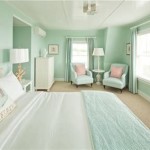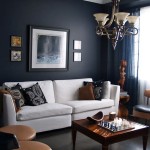How To Decorate With Half Paneled Walls
Half-paneled walls, also known as wainscoting, offer a classic and versatile design element that can enhance a room's aesthetic. This decorative wall treatment covers the lower portion of a wall, typically one-third to one-half, with panels, molding, and sometimes beadboard. The upper portion remains unpaneled, allowing for diverse decorative treatments. This technique adds architectural interest and provides a durable, easy-to-clean surface, particularly beneficial in high-traffic areas.
Understanding the various paneling styles is essential for successful implementation. Traditional raised panels offer a formal, classic look, while flat panels lean towards a more contemporary aesthetic. Beadboard, with its vertical grooves, evokes a cottage or farmhouse feel. The chosen style should complement the overall design of the room and the architectural style of the home. For example, raised panels might be suitable for a Victorian home, while flat panels may be a better fit for a modern dwelling.
Selecting the right materials is crucial for achieving the desired look and longevity. Wood is the traditional choice, offering a timeless and elegant feel. Various wood species are available, including oak, pine, and mahogany, each with its unique grain and color. MDF (Medium-Density Fiberboard) offers a cost-effective alternative to solid wood, while PVC (Polyvinyl Chloride) is a durable and moisture-resistant option suitable for bathrooms and kitchens.
The color palette plays a significant role in the overall impact of half-paneled walls. A classic approach involves painting the paneling a contrasting color to the upper wall. A lighter color on the paneling can create a sense of airiness and brightness, especially in smaller rooms. Darker paneling can add depth and drama, grounding the space. Monochromatic schemes, where the paneling and upper wall are painted the same color, offer a subtle and sophisticated look, focusing attention on the paneling's texture and architectural detail.
Wallpaper can be incorporated above the paneling to introduce patterns, textures, and visual interest. Geometric prints can create a modern feel, while floral patterns lend a more traditional touch. Textured wallpapers, such as grasscloth or linen, can add depth and warmth to the space. Consider the scale of the pattern and the room's size. Large patterns can overwhelm small rooms, while small patterns may get lost in larger spaces.
Artwork and decorative elements effectively enhance the space above the paneling. Mirrors can be strategically placed to reflect light and create an illusion of spaciousness. Shelving can display decorative objects, books, and plants, adding personality and functionality. Artwork should be chosen to complement the overall style and color scheme of the room. Consider grouping smaller pieces or creating a gallery wall for a cohesive look.
Lighting plays a crucial role in showcasing half-paneled walls. Wall sconces placed above the paneling can provide ambient lighting and highlight artwork or decorative elements. Recessed lighting can also create a soft, diffused glow. Avoid placing lighting directly on the paneling, as this can create harsh shadows and detract from the architectural details. Carefully planned lighting can enhance the room's ambiance and create a warm and inviting atmosphere.
When decorating a room with half-paneled walls, the existing architectural features should be considered. Fireplaces, windows, and doorways should be integrated into the design. For example, the paneling can be extended around a fireplace to create a focal point. Window treatments should complement the paneling and the overall style of the room. Coordination of these elements creates a cohesive and harmonious design.
Maintaining half-paneled walls is relatively simple. Regular dusting and occasional cleaning with a damp cloth will keep the panels looking their best. Wood paneling may require periodic waxing or polishing to maintain its luster. Avoid using abrasive cleaners, which can scratch the surface. Regular maintenance ensures the longevity and beauty of the paneling.
The height of the paneling significantly influences the overall aesthetic. Standard heights typically range from 32 to 48 inches. Higher paneling can create a more formal and traditional look, while lower paneling can make a room feel more open and casual. The ceiling height should also be considered. In rooms with low ceilings, lower paneling is generally recommended to avoid a cramped feeling.
The room's function should influence design choices. In high-traffic areas such as hallways and entryways, durable and easy-to-clean materials are essential. In living rooms and dining rooms, more decorative paneling styles and finishes can be used. Bathrooms and kitchens might benefit from moisture-resistant materials such as PVC. Tailoring the design to the room's function ensures practicality and aesthetic appeal.
Half-paneled walls offer a versatile design element that can enhance any space. By carefully considering the style, material, color, and decorative elements, one can create a stylish and functional space that complements personal preferences and the architectural style of the home. Successful implementation of half-paneled walls involves thoughtful planning and attention to detail.

30 Farmhouse Half Wall Paneling Ideas To Enhance Your Home

Living Room Ideas With Half Wood Paneling Walls Rustic Panel

33 Half Wall Panels For Unique Creative Inspiration George Panel

Half Panelled Walls Living Room Panelling Decor Modern Remodel

Popular Design Trends For Half Wall Panel In 2025 George

4 Elegant Half Wall Wood Panelling Ideas

Painted Half Wall Frames Paneling Makeover Wood

Half Wall Panelling Ideas With Slatwall Midi Naturewall

Half Wall Paneling Ideas Enhance Your Space With Cornices

5 Reasons Why You Should Panel Your Walls Tablero
Related Posts







